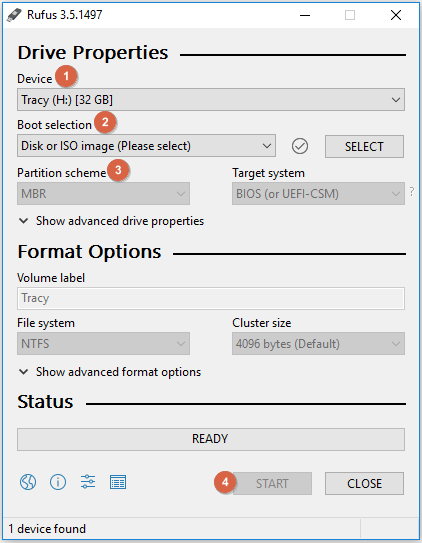
- BURN BOOT USB ISO HOW TO
- BURN BOOT USB ISO WINDOWS 10
- BURN BOOT USB ISO PORTABLE
- BURN BOOT USB ISO SOFTWARE
- BURN BOOT USB ISO WINDOWS 8.1
If it lists a number of boot options you're good to go. To see whether you're currently using UEFI boot, run sudo efibootmgr -v in a terminal. If you find an EFI directory in the ISO that's usually a good sign. Once again: Please note that for this to work, your computer's firmware must be UEFI compliant and the ISO must be ready for UEFI boot.
BURN BOOT USB ISO WINDOWS 10
(Edit: I just tried this with Windows 10 without success.
BURN BOOT USB ISO WINDOWS 8.1
I've successfully done this with both Windows 8.1 and Ubuntu 14.04, but I can't vouch for any other OS. The ISO must be configured for UEFI boot for this to work. CSM)) all you'll need is GParted and a file manager. When you use Rufus to write a Manjaro Live ISO to USB you must select DD mode when prompted to use standard or DD mode.If you boot with UEFI (not BIOS or UEFI with BIOS compatibility mode (a.k.a. Rufus Rufus is a utility that helps format and create bootable USB flash drives, such as USB keys/pendrives, memory sticks, etc. Writing to a USB Stick in Windows Using Rufus After the Write process has finished, reboot your system

Ensure that your USB device has been selected from the drop-down menuĥ. Navigate to where the ISO image has been saved and select itģ. Once Imagewriter has been downloaded and installed, ensure that your USB stick is plugged in before starting it.Ī brief guide to writing the Manjaro.
BURN BOOT USB ISO SOFTWARE
ImageWriter should be available for installation from your distribution's Software Center / Software Manager / Package Manager / repositories. More in Using a Burning Application ImageWriter User $ isohybrid -uefi -v output.iso COPY TO CLIPBOARD To burn the iso on an usb stick, enter the following command in a terminal : Read the forum post on HowTo create a bootable Windows ISO Using the Terminal Windows ISO files are notoriously difficult and requires special attention.
BURN BOOT USB ISO HOW TO
This section describes how to write a Linux ISO file to USB.
BURN BOOT USB ISO PORTABLE
The portable version can be downloaded from here. Several free software burner applications are available for Windows. This will bring up a series of dialogues to walk you through the process.įor Windows Vista or older versions of Windows you will need to download 3rd party software. In Windows 7 and later, support for burning an ISO to DVD is built-in. If necessary, follow any on-screen instructions provided. Click the Burn button to start the burning process. Again, it is strongly recommended to select the slowest speed available. Click the properties button to open the properties window, and then click the button beneath the title Burning Speed. Otherwise, click the button to select it manually.Ħ. Underneath the title Select a disc to write to the blank CD/DVD inserted should already have been automatically listed. Upon automatically returning to the Image Burning Setup window, note that the ISO file is now listed as the disc image to write.ĥ. Locate and double-click the downloaded ISO file to load it. Click the button beneath the title Select a disc image to write to open up your file manager. Click the Burn Image - Burn an existing CD/DVD image to disc button to open the Image Burning Setup window.Ĥ. Insert a Blank CD/DVD (use a DVD if burning an ISO for anything other than the NET Edition)ģ.


 0 kommentar(er)
0 kommentar(er)
